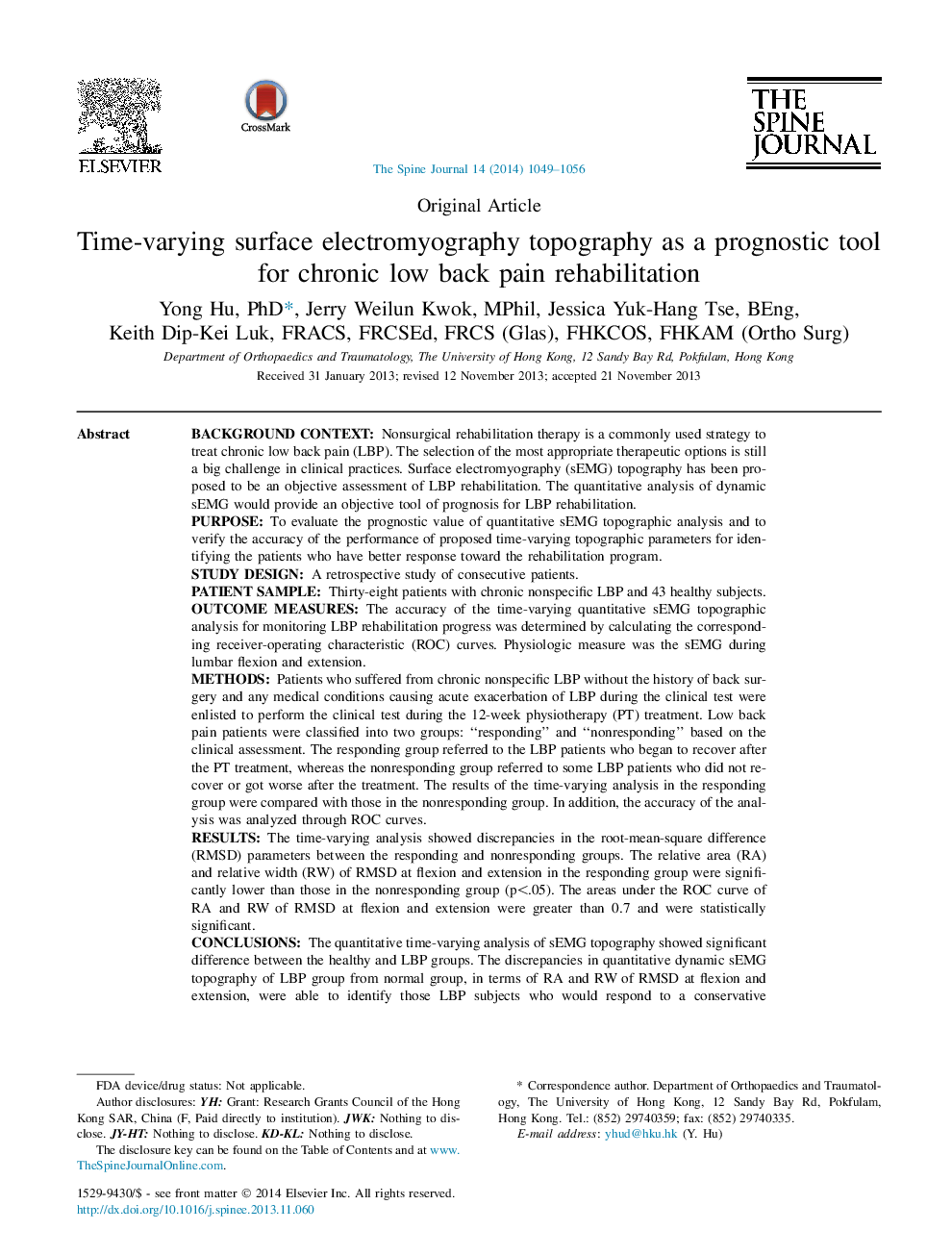| کد مقاله | کد نشریه | سال انتشار | مقاله انگلیسی | نسخه تمام متن |
|---|---|---|---|---|
| 4097783 | 1268598 | 2014 | 8 صفحه PDF | دانلود رایگان |
Background contextNonsurgical rehabilitation therapy is a commonly used strategy to treat chronic low back pain (LBP). The selection of the most appropriate therapeutic options is still a big challenge in clinical practices. Surface electromyography (sEMG) topography has been proposed to be an objective assessment of LBP rehabilitation. The quantitative analysis of dynamic sEMG would provide an objective tool of prognosis for LBP rehabilitation.PurposeTo evaluate the prognostic value of quantitative sEMG topographic analysis and to verify the accuracy of the performance of proposed time-varying topographic parameters for identifying the patients who have better response toward the rehabilitation program.Study designA retrospective study of consecutive patients.Patient sampleThirty-eight patients with chronic nonspecific LBP and 43 healthy subjects.Outcome measuresThe accuracy of the time-varying quantitative sEMG topographic analysis for monitoring LBP rehabilitation progress was determined by calculating the corresponding receiver-operating characteristic (ROC) curves. Physiologic measure was the sEMG during lumbar flexion and extension.MethodsPatients who suffered from chronic nonspecific LBP without the history of back surgery and any medical conditions causing acute exacerbation of LBP during the clinical test were enlisted to perform the clinical test during the 12-week physiotherapy (PT) treatment. Low back pain patients were classified into two groups: “responding” and “nonresponding” based on the clinical assessment. The responding group referred to the LBP patients who began to recover after the PT treatment, whereas the nonresponding group referred to some LBP patients who did not recover or got worse after the treatment. The results of the time-varying analysis in the responding group were compared with those in the nonresponding group. In addition, the accuracy of the analysis was analyzed through ROC curves.ResultsThe time-varying analysis showed discrepancies in the root-mean-square difference (RMSD) parameters between the responding and nonresponding groups. The relative area (RA) and relative width (RW) of RMSD at flexion and extension in the responding group were significantly lower than those in the nonresponding group (p<.05). The areas under the ROC curve of RA and RW of RMSD at flexion and extension were greater than 0.7 and were statistically significant.ConclusionsThe quantitative time-varying analysis of sEMG topography showed significant difference between the healthy and LBP groups. The discrepancies in quantitative dynamic sEMG topography of LBP group from normal group, in terms of RA and RW of RMSD at flexion and extension, were able to identify those LBP subjects who would respond to a conservative rehabilitation program focused on functional restoration of lumbar muscle.
Journal: The Spine Journal - Volume 14, Issue 6, 1 June 2014, Pages 1049–1056
